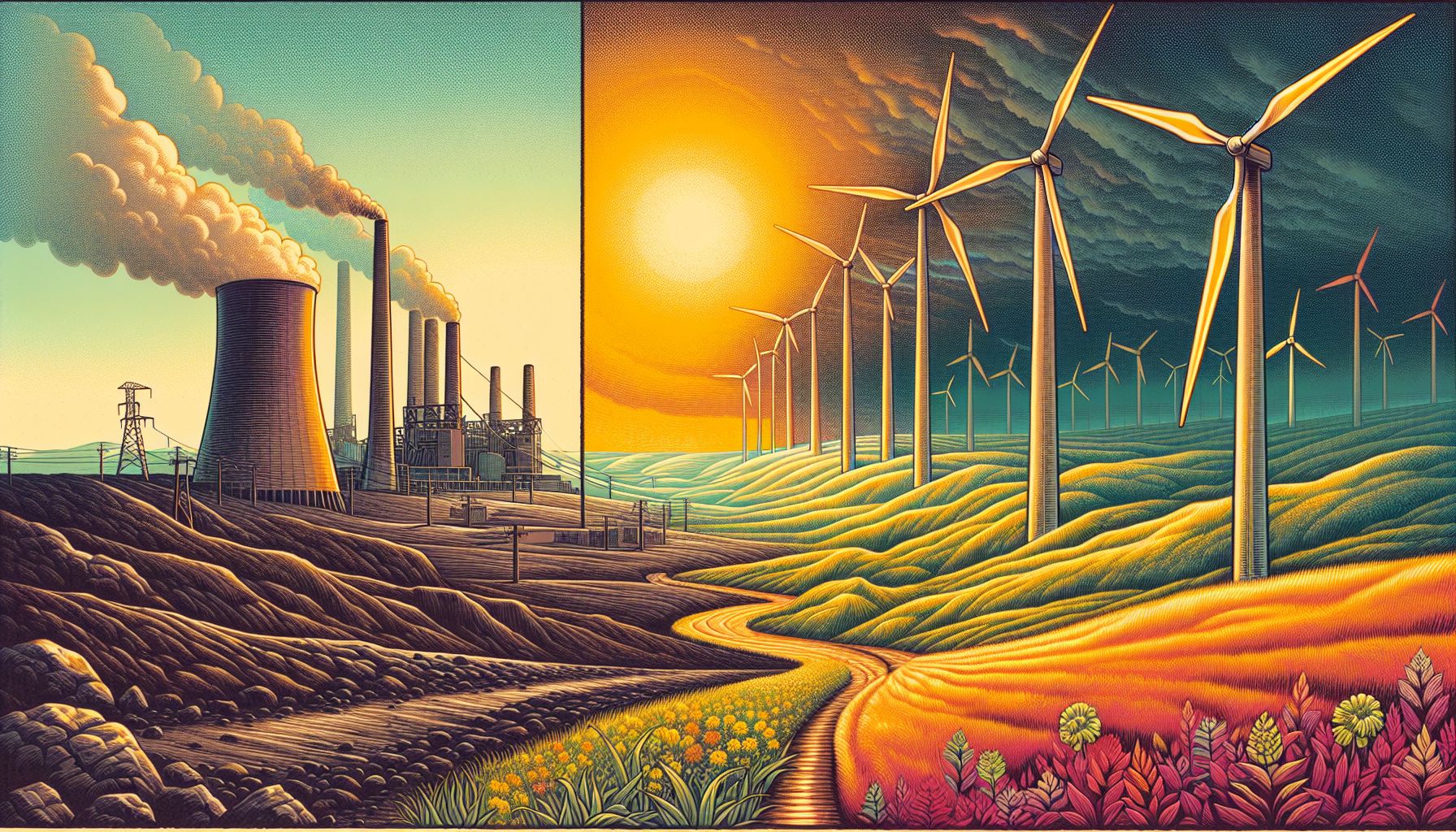Wind Power Surpasses Coal in U.S. Electricity Generation

Washington D.C., Wednesday, 10 July 2024.
For the first time in history, wind energy has overtaken coal as a source of electricity in the United States. The Energy Information Administration reports that in April, wind generated 47.7 million megawatthours of energy compared to coal’s 37.2 million. This milestone underscores the rapid growth of renewable energy and the declining role of coal in America’s power mix.
A Landmark Achievement
The surpassing of coal by wind energy in the United States marks a significant milestone in the nation’s energy landscape. This shift highlights the increasing adoption of renewable energy sources and the phasing out of fossil fuels. The Energy Information Administration (EIA), in its latest report, reveals that wind energy produced 47.7 million megawatthours (MWh) in April 2024, while coal generated 37.2 million MWh. This development is a testament to the country’s commitment to clean energy and the growing competitiveness of wind power.
Driving Factors Behind the Shift
Several factors have contributed to wind energy’s ascendancy over coal. One significant driver is the continuous decline in coal-fired power plant operations, influenced by the retirement of aging facilities and the increased economic viability of renewable energy sources. Additionally, advancements in wind turbine technology have enhanced efficiency and output, making wind power a more attractive option for electricity generation. The EIA had previously forecasted this trend, citing the rise of renewable energy and low natural gas prices as key elements in reducing coal’s share in the energy mix [1].
Geopolitical and Legal Challenges
Despite this progress, the transition from coal to wind energy is not without its challenges. Recent legal and political developments, such as the Supreme Court decision that favored those seeking to weaken climate change regulations, have created uncertainties in the renewable energy sector [2]. Furthermore, the increasing energy demands from artificial intelligence systems, as reported by The Washington Post, have the potential to slow down the retirement of coal-fired power plants [3]. These factors underscore the fragile nature of the current energy transition.
Global Context and Future Outlook
Globally, wind power is recognized as a crucial component in the fight against climate change. Countries like Germany have outlined ambitious strategies to expand their onshore wind capacity, aiming for significant increases by 2035 [4]. The United States’ achievement of wind surpassing coal sets a precedent and aligns with global efforts to increase renewable energy adoption. Analysts suggest that to meet the goals of the Paris Agreement, wind power needs to expand by over 1% of electricity generation per year [5].
The Role of Pioneering Companies
Key players in the renewable energy sector, such as the PNE Group based in Cuxhaven, Germany, have been instrumental in advancing wind energy projects. The PNE Group recently secured contracts for onshore wind farms totaling 91.5 MW in various regions of Germany, demonstrating their commitment to clean energy solutions [6]. Their efforts exemplify the proactive steps taken by companies globally to enhance wind energy infrastructure and capacity.
Conclusion
The historic overtaking of coal by wind energy in the United States is a major milestone in the global shift towards renewable energy. While challenges remain, this achievement highlights the potential for wind power to play a significant role in reducing greenhouse gas emissions and combating climate change. Continued support for renewable energy initiatives and technological advancements will be crucial in sustaining this momentum and ensuring a cleaner, more sustainable energy future.

